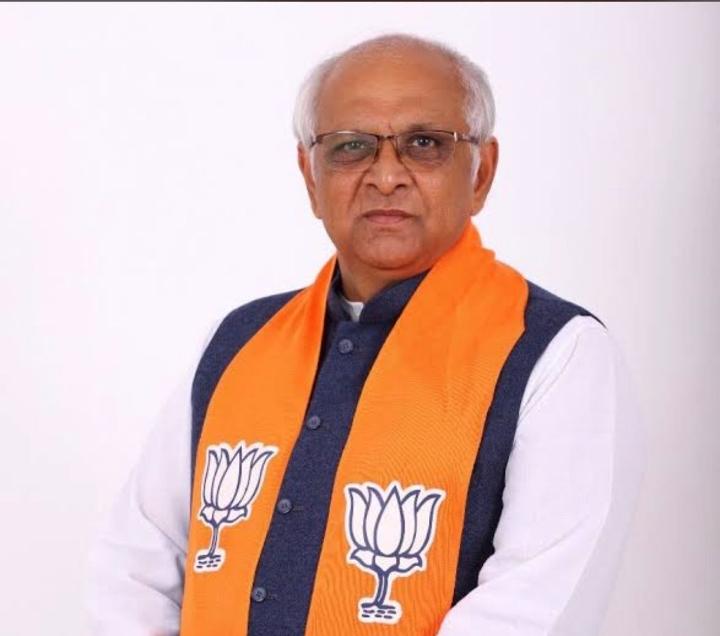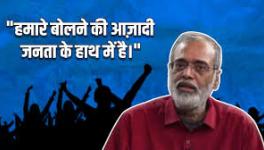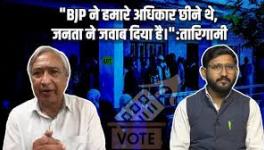Bhupendra Patel Declared New Gujarat CM Following Vijay Rupani's Resignation

Bhupendra Patel, the new CM of Gujarat
Bhupendra Patel, a close aide of former Gujarat Chief Minister Anandiben Patel – currently Governor of Uttar Pradesh – has been elected as the new CM of the western state on September 12. Patel is an MLA from Ghatlodia in Ahmedabad, a seat earlier held by Anandiben.
An engineer by education and a builder by profession, Patel is a leader from the Patidar community. He is a first-time MLA and had won Ghatlodia with a margin of about 1,17,000 votes – the largest in the 2017 assembly elections in Gujarat. He had earlier been Chairman of the Standing Committee of the Ahmedabad Municipal Corporation and the Chairman of the Ahmedabad Urban Development Authority (AUDA). He has also been a municipal councillor in Ahmedabad.
The announcement of Patel's chief ministership comes after the former CM, Vijay Rupani, stepped down from the post along with cabinet ministers on September 11. Rupani, who had just completed five years as the state's CM, tendered his resignation to Governor Acharya Devvrat in Gandhinagar in presence of Union Health Minister Mansukh Mandaviya and senior BJP leader Bhupendra Yadav.
"Gujarat's development journey needs to be led by a new leadership with renewed fervour under the leadership of the Prime Minister. Hence, I have resigned from the post of Chief Minister of Gujarat," Rupani told the media following his resignation.
The 65-year-old Rupani had replaced Anandiben Patel as CM in August 2016. The latter, who had resigned just about a year ahead of the assembly elections in 2017, was facing flak due to the Patidar agitation lead by Hardik Patel in December 2015 and then from the Una flogging incident in June 2016. The massive protests by Dalits following the latter added to a sense of anti-incumbency that had developed against the BJP during her rule.
Rupani’s resignation also comes about a year ahead of state elections slated for December next year. The mismanagement of the COVID-19 pandemic in Gujarat, especially during the second wave, the rise of Aam Aadmi Party in the local and civic body polls this year and discontentment amongst the Patidar (Patel) community are being seen as factors that went against Rupani.
Notablyy, the politically influential Patidar community had been demanding top roles for its leaders and even a chief minister from the community.
In June this year, several leaders of the community met at Khodaldham Temple, the primary place of worship of Leuva Patels (a subcaste of Patidars) located in Kagvad near Rajkot city in Gujarat's Saurashtra region.
“After Keshubhai Patel (former BJP chief minister of Gujarat), the Patidar community lost its dominance in the state. This meeting was held to discuss how to regain political influence for our community in the state. We want our Patidar leaders in political parties to be given primary responsibilities in Gujarat; be it the BJP or Congress, Patidars should get top posts. Why shouldn't the next state unit Congress chief or even a chief minister be from our community?” Naresh Patel, chairman of Khodaldham Trust, had told the media after the meeting.
The Patidar community forms about 14-15% of the electoral population of the state and is largely divided into two main sub-castes – Kadva and Leuva. The community has been the BJP’s traditional support base since 1984-85. Congress’s Madhavsinh Solanki, who was the Gujarat CM four times, came to power in the 1980s with a support base formed from the KHAM – Khastriya, Harijan, Adivasi and Muslim – combine. This isolated the Patels of the state and the period witnessed two major anti-reservation movements – one between 1976-80 and the second in 1985 – paving the way for the BJP, which had already started to unite all higher castes under its fold.
However, in the assembly elections of 2017 that happened just after the Patidar agitation led by Hardik Patel in late 2015, the BJP lost a considerable portion of its support base amongst the Kadva Patidars who primary hail from north Gujarat. With an acute agrarian crisis affecting the Saurashtra region dominated by the Leuvas, the BJP was reduced to 99 seats in the assembly, its lowest in Gujarat ever.
Though the BJP has since recovered its numbers in the Assembly over the years with Congress MLAs jumping ship, the support of the Patidar community still remains a key factor ahead of polls in 2022.
Bhupendra Patel belongs to the Kadva sub-caste and is a trustee of Sardardham and the Vishwa Umiya Foundation. Amongst the Patidar community, Kadva Patels, who form about 30% of the community, had been at the forefront of the Patidar agitation in 2015 and were led by Hardik Patel who also belongs to the same sub-caste.
Bhupendra Patel is all set to take oath as the 17th chief minister of Gujarat along with his cabinet ministers. The reshuffle is being seen as a last resort by the BJP to counter anti-incumbency ahead of the 2022 state polls.
Notably, in the local and civic polls in February this year the BJP lost crucial seats to AAP in Surat, a city dominated by Patidars engaged in the diamond and textile industry. The AAP that emerged as an opposition in Surat is led by Gopal Italia, another Patidar who hails from Saurashtra.
Get the latest reports & analysis with people's perspective on Protests, movements & deep analytical videos, discussions of the current affairs in your Telegram app. Subscribe to NewsClick's Telegram channel & get Real-Time updates on stories, as they get published on our website.























